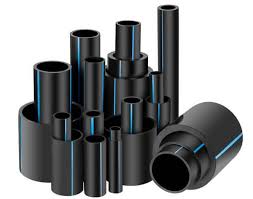Dec . 14, 2024 03:08 Back to list
PPR Pipes for Efficient Water Supply Systems and Applications
Understanding PPR Pipe for Water Supply A Comprehensive Guide
In today’s construction and plumbing industries, the choice of materials for water supply systems is a critical decision that impacts longevity, safety, and efficiency. Among the various options available, Polypropylene Random Copolymer (PPR) pipes have emerged as a preferred choice for many engineers and contractors worldwide. This article delves into the attributes, benefits, installation techniques, and applications of PPR pipes for water supply systems.
What are PPR Pipes?
PPR pipes are made from a thermoplastic polymer known as polypropylene, specifically the random copolymer type. This material is renowned for its excellent mechanical and thermal properties, making it highly suitable for a range of pressure and temperature conditions typically encountered in water supply systems.
Key Benefits of PPR Pipes
1. Durability PPR pipes are resistant to corrosion and do not rust, ensuring a long lifespan of over 50 years under normal operating conditions. Their ability to withstand harsh water conditions makes them suitable for both hot and cold water applications.
2. Chemical Resistance These pipes exhibit excellent resistance to a wide range of chemicals, which makes them ideal for various industrial applications beyond just water supply.
3. Temperature Tolerance PPR pipes can handle temperatures ranging from -40°C to +95°C, making them suitable for both hot and cold water lines. This wide temperature resistance is a significant advantage over many traditional pipe materials.
4. Low Thermal Conductivity PPR has low thermal conductivity, which reduces heat loss in hot water systems. As a result, energy costs for heating water can be significantly reduced.
5. Lightweight Compared to metal pipes, PPR pipes are considerably lighter. This characteristic not only makes transportation easier but also simplifies installation, reducing labor costs.
6. Ease of Installation PPR pipes can be easily welded together using heat fusion techniques, resulting in joints that are as strong as the pipe itself. This method eliminates leaks and enhances the system's overall reliability.
7. Eco-Friendly PPR pipes are recyclable and do not leach harmful chemicals into water, aligning with increasing environmental awareness and regulations.
Installation Techniques
The installation of PPR pipes is relatively straightforward compared to other materials, thanks to their welding capabilities. Here’s a brief overview of the process
ppr pipe for water supply product

1. Preparation Before installation, ensure that the pipes and fittings are clean and free from any contaminants. This step is crucial for achieving strong, watertight joints.
2. Cutting Accurately measure and cut the pipes to the desired lengths using a proper cutting tool to prevent burrs.
3. Heating Use a specialized welding machine to heat both the pipe and the fitting until they reach the appropriate temperature.
4. Joining Once the correct temperature is achieved, quickly align and insert the pipe into the fitting. Hold in place for a few seconds to allow for proper fusion.
5. Cooling Allow the joined section to cool undisturbed. This is vital for the formation of a strong bond.
Applications of PPR Pipes
PPR pipes are versatile and can be applied in numerous settings, including
- Residential Water Supply Ideal for domestic plumbing, PPR pipes are often used in hot and cold water systems due to their durability and safety.
- Industrial Applications Their chemical resistance makes PPR pipes suitable for factories and facilities that handle various chemicals.
- Heating Systems PPR is extensively used in heating applications, such as underfloor heating, where its thermal properties prove beneficial.
- Agricultural Irrigation The durability and corrosion resistance allow for long-lasting irrigation systems in agriculture.
Conclusion
PPR pipes represent a modern solution for water supply systems, combining durability, efficiency, and environmental consideration. Their ease of installation and resistance to corrosion further enhance their appeal over traditional plumbing materials. As industries continue to prioritize sustainability and reliability, the use of PPR pipes is set to increase, making them a cornerstone in plumbing and construction practices globally. Whether for residential, industrial, or agricultural use, understanding the advantages of PPR pipes can help in making informed decisions that lead to safer and more efficient water supply systems.
-
High-Quality PVC Borehole Pipes Durable & Versatile Pipe Solutions
NewsJul.08,2025
-
High-Quality PVC Perforated Pipes for Efficient Drainage Leading Manufacturers & Factories
NewsJul.08,2025
-
High-Quality PVC Borehole Pipes Durable Pipe Solutions by Leading Manufacturer
NewsJul.08,2025
-
High-Quality PVC Borehole Pipes Reliable PVC Pipe Manufacturer Solutions
NewsJul.07,2025
-
High-Quality UPVC Drain Pipes Durable HDPE & Drain Pipe Solutions
NewsJul.07,2025
-
High-Quality Conduit Pipes & HDPE Conduit Fittings Manufacturer Reliable Factory Supply
NewsJul.06,2025

